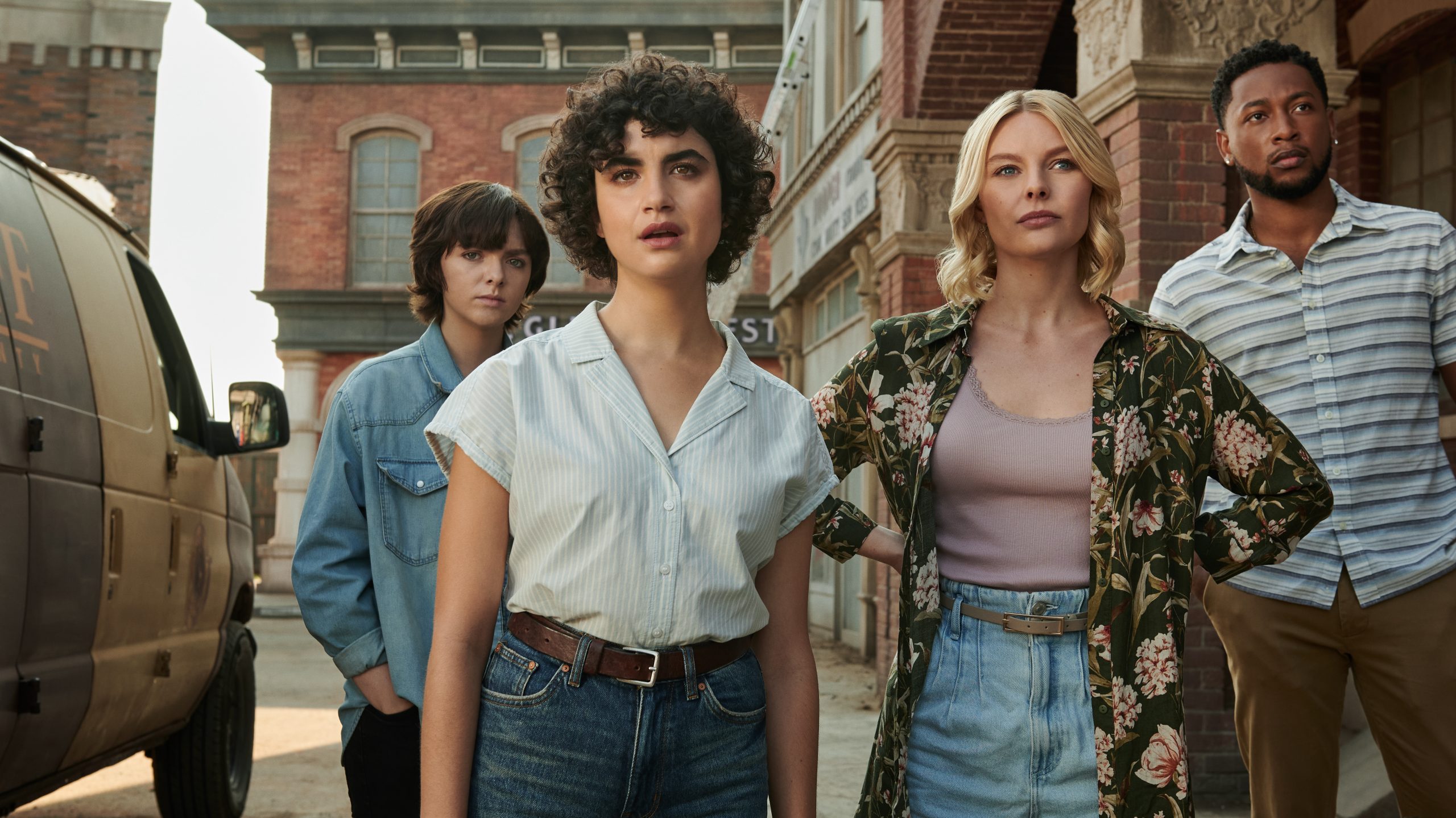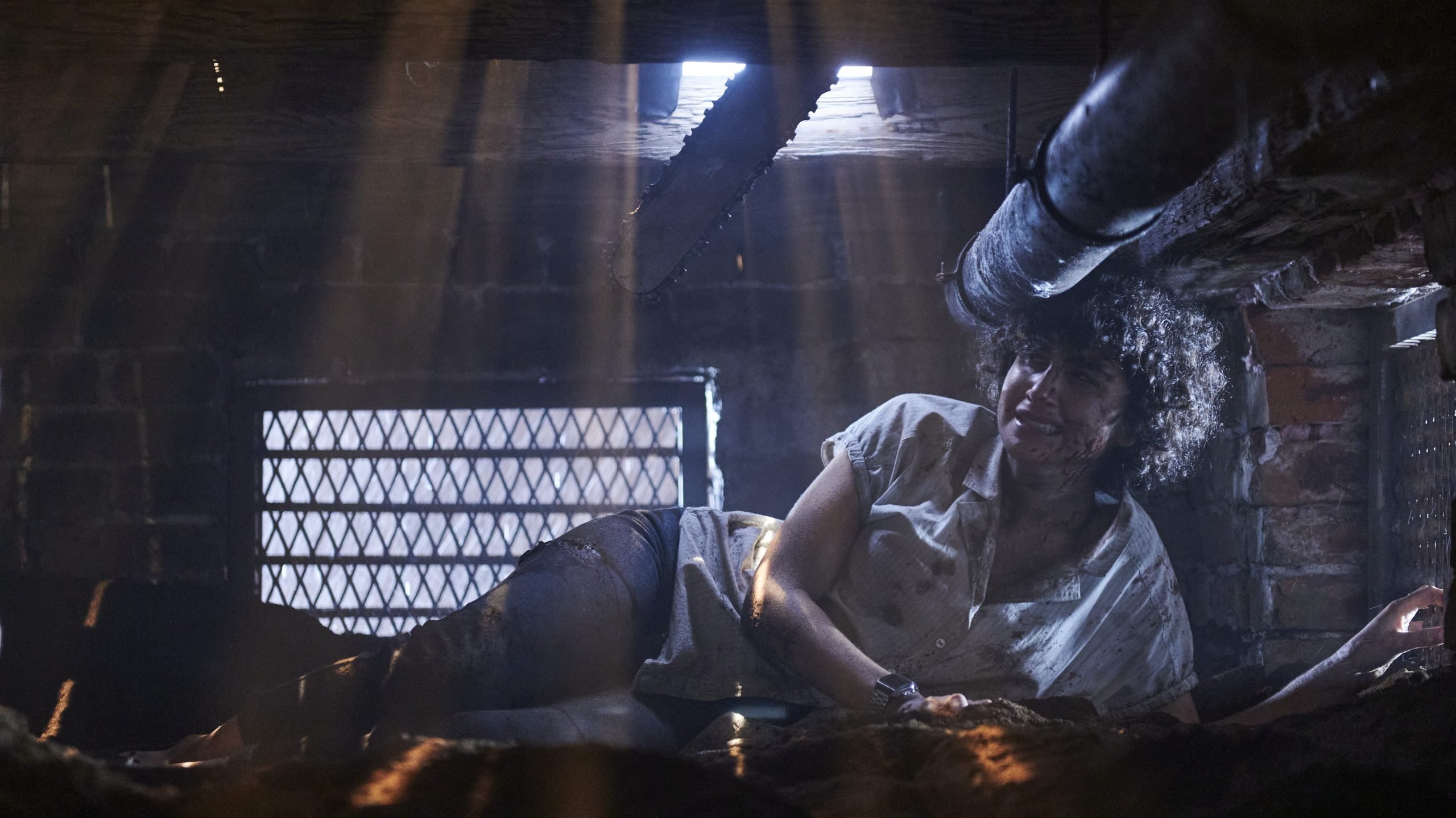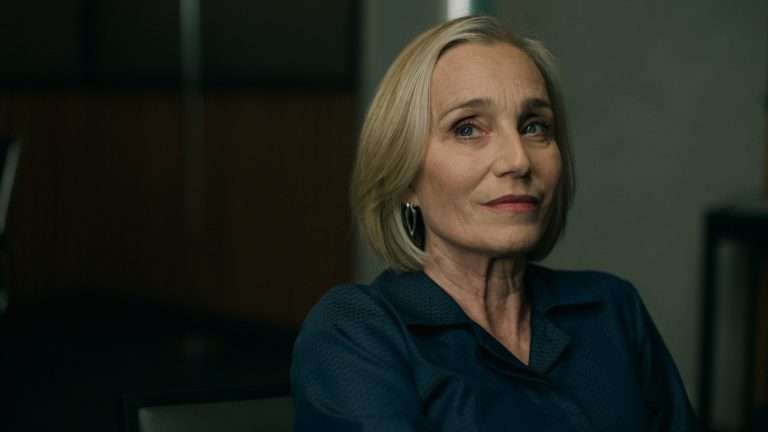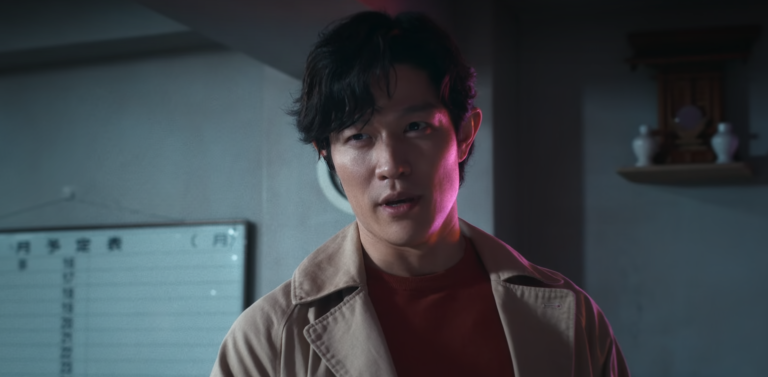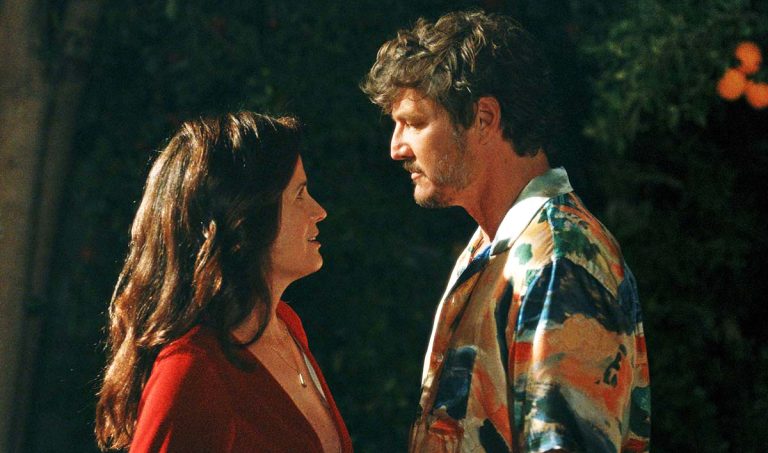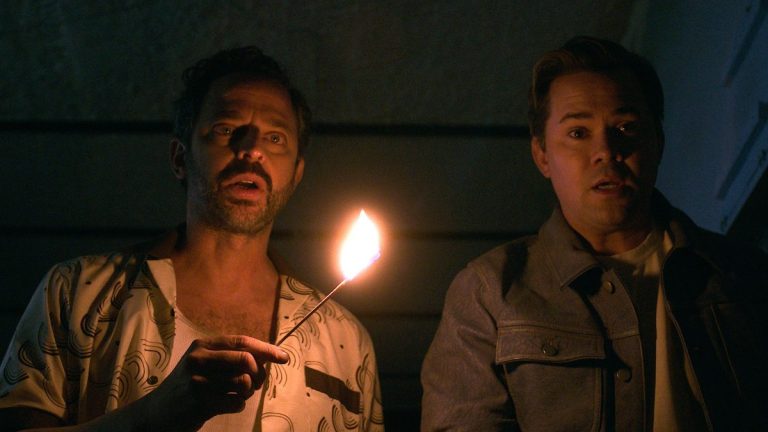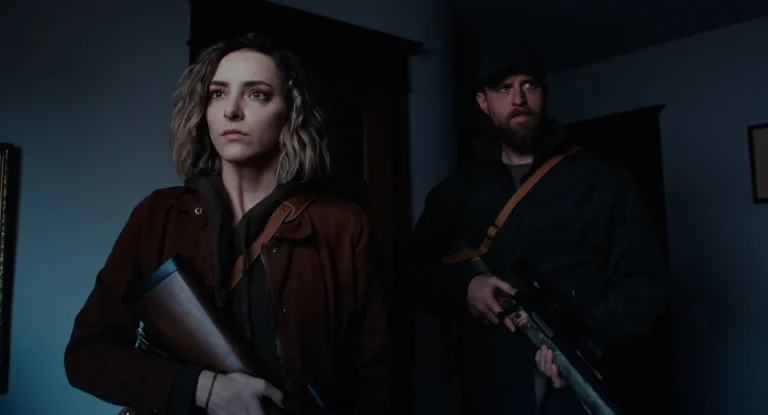Texas Chainsaw Massacre (2022) Movie Ending Explained & Themes Analyzed: Tobe Hooper’s 1974 slasher classic, The Texas Chain Saw Massacre, is, beyond the shadow of a doubt, a triumph in the horror genre. Limited by budgetary constraints, Hooper had to find creative ways of filming certain sequences, and it is perhaps the unique circumstances that surround the project that grant it a terrifyingly authentic feel. Be it the unforgettable image of Leatherface swinging his chainsaw wildly under the Texas sun, the unsettling characters who comprise the Sawyer family, or the traumatic chase sequences in which Sally Hardesty tries her utmost best to evade a painful death, Texas Chain Saw Massacre is slasher at its gloriest. Unfortunately, a plethora of reboots and remakes have followed the original, which still remains untouched in terms of the legacy it has helped carve for horror as a whole.
Following the formula of David Gordon Green’s Halloween films, which ignore all entries except John Carpenter’s original, Netflix’s legacy sequel, Texas Chainsaw Massacre (2022) is a direct continuation of Hooper’s cult classic. This, of course, means that entries such as 2003’s The Texas Chainsaw Massacre and backstory-driven reboots such as Leatherface do not factor into the ambit of the “requel”, as it chooses to craft an original narrative that continues Leatherface’s legacy. However, intentions and outcomes are often mutually exclusive, which is exactly the case with Texas Chainsaw Massacre — while director David Blue Garcia intended for the sequel to be respectful of Hooper’s original, the end result is a series of misguided steps that ultimately butcher the legacy of a decades-spanning horror franchise.
No, while Texas Chainsaw Massacre is nowhere nearly as terrible as Texas Chainsaw 3D, it hinges itself on a narrative with paper-thin characters, and the return of an iconic masked cannibal who seems neither interesting nor menacing, as opposed to Hooper’s original. The socio-political commentary inherent within the film’s fabric is flimsy at best, and the ending is one crafted purely for the sake of shock factor, which cheapens the premise, to begin with. Keeping these factors in mind, here’s an in-depth look into Netflix’s Texas Chainsaw Massacre, what the ending of the film intended to evoke, and the themes that it managed to evolve (or failed to develop) throughout its run time. Needless to say, SPOILERS ABOUND.
TEXAS CHAINSAW MASSACRE (2022) Synopsis & Summary:
MILLENNIALS IN TEXAS AND THE RETURN OF LEATHERFACE:
Texas Chainsaw Massacre opens with a voiceover by John Larroquette (who originally voiced Hooper’s 1974 film), chronicling the gruesome murders that occurred on August 18, 1973, in Texas, and how lone survivor Sally Hardesty (Olwen Fouéré) has refused to comment further about the terrors she experienced on that dreadful day. This piece of exposition plays out on a true-crime show playing inside a gas station, where Lila (Elsie Fisher) is picking up a few things before heading to Harlow with her sister Melody (Sarah Yarkin), and friends Dante (Jacob Latimore) and Ruth (Nell Hudson). The youngsters have arrived at Harlow with the intention of transforming the deserted town into a thriving community, which is well-intentioned but naive, considering the fact that they know next-to-nothing of the horrors that still haunt the place.
When they arrive at Harlow, they immediately notice a confederate flag hanging from a building (which is terrible for more reasons than one, but more so for the group as investors would be arriving soon). After Dante and Melody enter the seemingly abandoned Harlow Orphanage to remove the flag from the inside, they suddenly encounter an old woman named Virginia, who claims to still be the owner of the place. When asked to provide proof, she refuses, taunting Dante (a black man) that she meant “nothing” by the confederate flag, as she has raised many “boys like him.”
After the cops are called on her, she violently falls sick, prompting the policemen and Ruth to accompany her in an ambulance. A tall, menacing man also joins them: he had been living with Ms. Virginia at the orphanage, presumably being the last of her boys that she took care of. After Virginia dies abruptly, all hell breaks loose — the man is no one other than Bubba Sawyer, A.K.A Leatherface and the death of his sole caregiver awakens the killer within him after 50 years. The brutal massacres begin, starting with Ruth and the policemen, who are killed amid the cornfields.
Related to Texas Chainsaw Massacre (2022) Movie Explained – Dune (2021) Movie Explained
WHY DOES LEATHERFACE COMMENCE HIS MASSACRES AFTER REMAINING DORMANT FOR 50 YEARS?
The end of Hooper’s Texas Chainsaw Massacre saw Leatherface swinging his chainsaw wildly in a fit of mad rage, after Sally Hardesty has the last laugh, being able to get away from him right at the final moment. What happened after is unclear, but based on the (half-baked) hints in Texas Chainsaw Massacre, it is possible that something drastic happened to the Sawyer family, post which, Leatherface was sent to Harlow Orphanage. Being a cannibalistic killer who partook in his family’s ritual of torturing those they deemed as “outsiders”, Leatherface is, of course, not of sound mind, and the original film hinted that his mental capacities were somewhat stunted, like that of a child’s.
It is possible that the reason why the killings stopped since 1975 is that Virginia was somehow able to stop him from giving in to this innate and primal urge, nurturing him with love and keeping him sheltered from the outside world. Although the arrival of the youngsters in Harlow disrupts Leatherface’s existence, which is exacerbated by Virginia’s death, the teenagers are nowhere responsible for whatever happens next. No matter how sympathetic Leatherface’s backstory is (wherein his nature is greatly influenced by nurture or lack thereof), it is important to remember that he is a remorseless serial killer, who feels absolutely no empathy for anyone at all, and holds no qualms to butcher innocents when he feels like.
TEXAS CHAINSAW MASSACRE (2022) MOVIE THEMES ANALYSED:
MILLENNIAL CULTURE & GENTRIFICATION:
The underlying themes in a film, especially horror, help define the fabric of a narrative, as the unfurling of the same hinges on how expertly these subject matters are executed. Unfortunately, Texas Chainsaw Massacre does not quite know what it stands for: while there is an underlying criticism of gentrification (which is a serious issue, leading to the displacement of local communities), terming the youngsters as “gentrif******” is a tad unfair, as Dante and Melody genuinely believed in the idea of transforming Harlow into a booming community.
As Harlow was already a ghost town, and most of the properties were deserted, they were not really displacing anyone, at least not on purpose, given their understanding that the bank had sorted out this issue. While their presence in Harlow can be analyzed via the lens of privileged kids disrupting peaceful semi-urban life, this does not seem to be the case here, as they are mostly respectful of the place’s history, although they are grandly unequipped to deal with the monstrosities that haunt Harlow in the form of Leatherface.
SURVIVOR’S GUILT & GUN CONTROL:
Apart from this, the film does not make its stance about gun control clear: are they sympathetic to Lila’s trauma, or are they advocating the use of guns when the need arises? This issue makes itself clear in the form of Lila’s character, which, although, is meatier than the rest, is devoid of thoughtful nuance. Lila, a mass school shooting survivor, is clearly still traumatized by the incident, which makes her anti-gun stance pretty clear and understandable. However, when her character is shown fascinated by guns in the same vein, it makes little sense in terms of her survivor’s guilt and her character in general. When weighed against meaningful metanarrative, these themes fall flat, much like Halloween Kill’s shallow, out-of-place anti-mob rhetoric which ended up hurting the plot more as opposed to helping it.
Also, Read – Kimi Movie Explained: Ending & Themes Analysed
TEXAS CHAINSAW MASSACRE (2022) MOVIE ENDING EXPLAINED:
WHY IT IS A DISSERVICE TO FANS OF THE FRANCHISE?
The ending of Hooper’s original to perfect in many ways: Sally Hardesty is cemented as the final girl in the history of horror, a masked cannibal expresses his frenzy in a markedly terrifying way onscreen, and the ending provides catharsis to viewers, who sigh in relief due to Sally’s escape. While the end goal of horror is to not give in to clichés, wherein it is supposed to subvert expectations, there are several reasons why the ending of Netflix’s Texas Chainsaw Massacre does not meet these standards.
The glaring problem of the legacy sequel is not only Leatherface (who seems more of an automaton butchering people, it just feels so inauthentic) but the portrayal of Sally Hardesty, who jeopardizes the safety of two young girls in favor of taking revenge. As someone who has survived the horrors of Leatherface firsthand, who lost her friends and family all those years ago, it is downright shameful to portray Hardesty as someone who would do this to other survivors, who are roughly the same age as her and as traumatized by the ordeal.
Moreover, with Leatherface butchering Hardesty in such an off-hand manner (he literally plunges his chainsaw right through her and tosses her in a pile of garbage), Texas Chainsaw Massacre undoes, rather, downright disrespects Sally’s triumph as the final girl in the original. In an age wherein horror is experiencing a final girl resurgence (Sidney Prescott/Laurie Strode), it is regressive to not only kill off one of horror’s most iconic final girls in such an unceremonious way but rather unfair to decapitate one of the final girls (Melody) in a shocking final twist.
While there is nothing inherently wrong with killing off Melody, the way it has been done creates an inversion of the final scene in Texas Chain Saw Massacre, and not in the best way — Lila, traumatized beyond repair, helplessly watches a cannibalistic killer behead her sister and dance maniacally on the streets, while she escapes away in a self-driving car. While trauma is a compelling motivator in slashers, this particular cycle is forced, on the nose, and too shabbily executed for it to work within functioning capacity.


